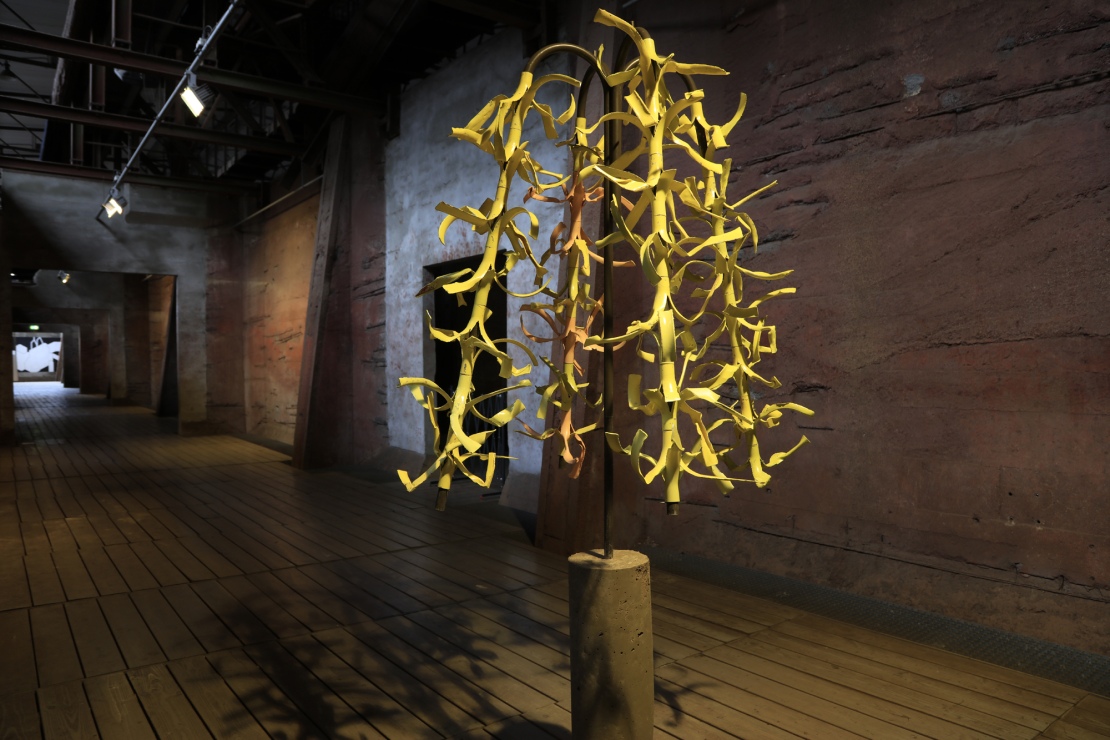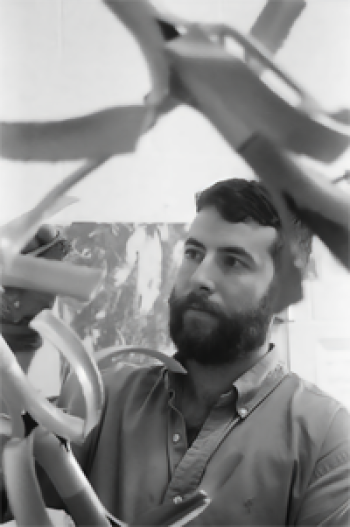Stephen Burke
Website
Exhibitions
Works
Galv Fountain

Stephen Burke KHV kompr
Copyright: Karl Henirich Veith
Date
2024, in situ
Dimensions
Höhe 2,6 m
Description
It would be no exaggeration to say that Stephen Burke has almost single-handedly created an international contemporary art movement. Not as an artist, mind you, but rather as the curator of a fan account on social media. He was responsible for coining the term “post-vandalism” – which was “long overdue”, according to critic Larissa Kikol – and under this rubric presents works at the border between street aesthetics and canonical art. The focus here is less on the crossover per se but rather on the aestheticisation of the circumstances and implications of such works. Anyone who has ever wondered why some walls, following the removal of graffiti, look like a Mark Rothko painting is already pretty close here. As a career move, this was both ingenious and dangerous – since Burke himself, of course, produces precisely this style of art.
His work Galv Fountain takes visual and formal cues from a weeping willow. The work is conceived as a “visual commentary on the complex power dynamics in public spaces and the role of architecture in shaping and controlling these environments”. Mechanisms of defence and control such as metal spikes on fences or on surfaces where people might sit are a physical expression of how the logic of exploitation inherent to our “alternative-free” social system tries to select between those who may, or may not, be present in public spaces: pigeon spikes against “useless” people. This hostile architecture provides Burke with rich material.
Robert Kaltenhäuser
